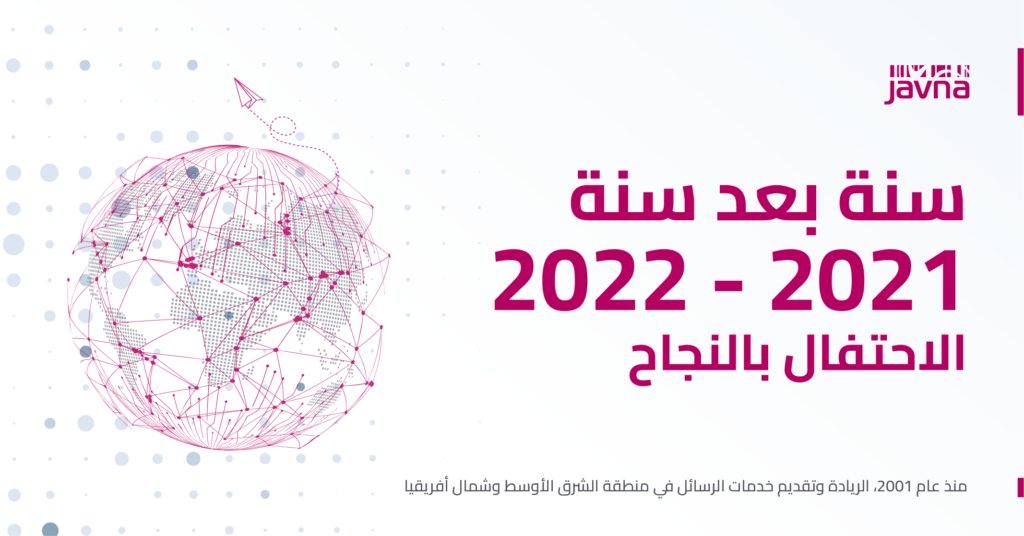يُعد رسم خرائط رحلة العميل استراتيجية محورية للشركات التي تهدف إلى تعميق فهمها لتجارب العملاء وتحسين المشاركة عبر جميع نقاط الاتصال.
تستكشف هذه المقالة الدور المتكامل لمنصة الاتصالات كخدمة (CPaaS) وخدمات المراسلة في تحسين هذه الرحلات وتحسينها.
ستحصل على رؤى حول كيفية استخدام هذه التقنيات بشكل استراتيجي لتعزيز التفاعل من الاتصال الأولي وحتى دعم ما بعد البيع، مع التركيز على التواصل الشخصي والمشاركة في الوقت المناسب وزيادة رضا العملاء.
عن طريق الدمج CPaaS وخدمات الرسائل, يمكن للشركات أن تعزز تجربة عملاء سلسة ومتفوقة، مما يؤدي في النهاية إلى تعزيز العلاقات وزيادة ولاء العملاء.
1. أهمية تخطيط رحلة العميل
رسم خرائط رحلة العميل هي عملية استراتيجية تصور المسار الذي يسلكه العميل مع الشركة، بدءًا من المشاركة الأولية إلى الولاء على المدى الطويل. وهي تحدد التفاعلات ونقاط الاتصال الرئيسية، وتقدم رؤى حول احتياجات العملاء وتفضيلاتهم ونقاط الألم.
تكمن أهمية هذا التعيين في قدرته على خلق تجربة عملاء سلسة من خلال تسليط الضوء على فرص التحسين والتخصيص في كل مرحلة.
من خلال فهم الرحلة من منظور العميل، يمكن للشركات أن تصمم استراتيجياتها لتلبية التوقعات وتجاوزها، مما يعزز الرضا ويعزز التواصل الأعمق مع جمهورها.
هذا التركيز الاستراتيجي على تجربة العملاء أمر ضروري لبناء الثقة والولاء والميزة التنافسية في السوق اليوم.
2. فوائد خدمة CPaaS لتحسين رحلات العملاء
تعزز CPaaS (منصة الاتصالات كخدمة) بشكل كبير من تفاعلات العملاء، حيث توفر للشركات أداة قوية لتحسين تجربة العميل. تشمل فوائد استخدام CPaaS ما يلي:
-
التواصل المخصص:
تخصيص التفاعلات باستخدام بيانات العملاء، مما يجعل التفاعلات أكثر ملاءمة.
وفقاً لما جاء في أكسنتشر التفاعلية (2023)، 73% من المستهلكين يفضلون تخصيص تطبيق الرسائل، مما يُظهر قدرة CPaaS على تقديم اتصالات مستهدفة.
-
تجربة القنوات المتعددة:
ضمان رحلة متناسقة عبر جميع القنوات. استبيان شركة PWC 2023 يشير إلى أن 73% من المستهلكين يقدّرون تجربة العملاء بشكل كبير، مما يؤثر على قراراتهم الشرائية. تدمج خدمة CPaaS قنوات مثل SMS والبريد الإلكتروني على منصة واحدة لتواصل سلس.
-
المشاركة في الوقت الفعلي:
تمكين الردود الفورية على استفسارات العميل، تعزيز الشعور بالرضا.
-
قابلية التوسع وفعالية التكلفة:
يدعم نمو الأعمال ويقلل التكاليف من خلال أتمتة التواصل . وجدت شركة IDC (2022)أن 80% من الشركات التي تستخدم CPaaS أفادت بتحسين الكفاءة التشغيلية، مما يبرز فوائده في تبسيط العمليات وتوفير النفقات.
3. منصات المراسلة: الاستخدامات عبر رحلة العميل
فيما يلي أمثلة وأدوار منصات المراسلة المختلفة في إثراء كل مرحلة من مراحل رحلة العميل.
تُستخدم لإرسال عروض ترويجية وتحديثات مخصصة، والإجابة عن الاستفسارات في الوقت الفعلي، وتقديم دعم ما بعد البيع.
فعالة للتذكير بالمواعيد، وتأكيدات المعاملات، والتنبيهات الحساسة للوقت.
-
فيسبوك ماسنجر:
مثالية لإشراك العملاء بالمحتوى التفاعلي، ومحادثات خدمة العملاء، وجمع الملاحظات.
-
الدردشة عبر الإنترنت:
تقديم المساعدة الفورية على المواقع الإلكترونية، وإرشاد العملاء خلال اتخاذ قرارات الشراء أو حل المشكلات التي تواجههم.
تُمكِّن هذه المنصات الشركات من مقابلة العملاء أينما كانوا، مما يعزز تجربة العملاء بشكل عام من خلال جعل التفاعلات سلسة وسريعة الاستجابة طوال الرحلة بأكملها.
4. الاستفادة من استراتيجيات CPaaS واستراتيجيات المراسلة
تنطوي الاستفادة من خدمات CPaaS وخدمات المراسلة كخدمة معًا على التكامل الاستراتيجي لتعزيز التواصل مع العملاء ومشاركتهم. تتضمن الاستراتيجيات الرئيسية ما يلي:
-
قنوات الاتصال الموحّدة:
تكامل خدمات المراسلة عبر منصات مختلفة عبر CPaaS لتوفير خدمة متناسقة تجارب العملاء.
-
التخصيص الآلي:
استخدام خدمة CPaaS لأتمتة الرسائل المخصصة بناءً على بيانات العملاء وسلوكهم، وتقديم محتوى مستهدف من خلال قنوات الرسائل.
-
التفاعلات في الوقت الفعلي:
قم بتطبيق حلول المراسلة الفورية لدعم العملاء في الوقت الفعلي وتقديم الملاحظات لهم، مما يسهل التوصل إلى حلول فورية ويعزز رضا العملاء.
-
الرؤى المستندة إلى البيانات:
توظيف تحليلات CPaaS لفهم تفاعلات العملاء عبر منصات المراسلة، مما يتيح اتخاذ قرارات مستنيرة لتحسين استراتيجيات التواصل.
من خلال الجمع بين إمكانات CPaaS وخدمات المراسلة كخدمة، يمكن للشركات تشكيل منظومة تواصل سلسة ومخصصة وفعالة ومصممة خصيصاً لتلبية توقعات العملاء المتطورة.
جافنا, بصفتها مزودًا رائدًا في هذا المجال، تتفوق في تسهيل عمليات التكامل هذه، حيث تقدم حلول CPaaS قوية تمكن الشركات من الاستفادة من خدمات المراسلة بفعالية.
5. تقنيات لتجارب المراسلة المصممة خصيصًا
تتضمن الاستفادة من خدمات المراسلة لتقديم تجارب مخصصة للعملاء تقنيات استراتيجية تضمن أن تكون الاتصالات مخصصة وذات صلة. تشمل المناهج الرئيسية ما يلي:
-
التجزئة:
قم بتجميع العملاء بناءً على الخصائص الديموغرافية أو السلوك أو التفضيلات لإرسال رسائل مستهدفة تلقى صدى لدى كل شريحة.
-
الرسائل السياقية:
استخدم تاريخ تفاعل العميل وسياق تفاعله لصياغة رسائل ذات صلة بالمرحلة الحالية للفرد في رحلة العميل.
-
رموز التخصيص:
قم بتضمين رموز التخصيص في الرسائل، مثل اسم العميل أو سجل الشراء الأخير، لإنشاء اتصال شخصي أكثر.
-
حلقات التغذية الراجعة
تنفيذ آليات تتيح للعملاء تقديم ملاحظاتهم من خلال خدمات المراسلة، واستخدام هذه المدخلات لزيادة تخصيص استراتيجية المراسلة وتحسينها.
تُمكِّن هذه التقنيات الشركات من استخدام خدمات المراسلة بفعالية، مما يخلق تجارب أكثر جاذبية وتخصيصاً تزيد من رضا العملاء وولائهم.
6. تحليل رحلة العميل وتنقيحها
يُعد تحليل رحلة العميل وتحسينها عملية مستمرة تستفيد من البيانات والرؤى لتعزيز تجربة العميل بشكل عام. تتضمن الخطوات الرئيسية ما يلي:
-
تجميع البيانات:
اجمع بيانات شاملة عن تفاعلات العملاء عبر جميع نقاط الاتصال لفهم سلوكياتهم وتفضيلاتهم.
-
آراء العملاء:
السعي بنشاط للحصول على تعليقات العملاء على تجاربهم لتحديد مجالات التحسين.
-
مقاييس الأداء:
استفد من تحليلات خدمة CPaaS وخدمة الرسائل لقياس معدلات المشاركة وأوقات الاستجابة ومستويات الرضا.
-
التحسين التكراري:
استخدم الرؤى المكتسبة لإجراء تعديلات مستهدفة على استراتيجيات التواصل، وتحسين رحلة العميل باستمرار لتحقيق أفضل النتائج.
ويضمن هذا النهج قدرة الشركات على تكييف استراتيجياتها وتطويرها لتلبية توقعات العملاء المتغيرة، مما يؤدي إلى تحسين رضا العملاء وولائهم.
7. الخاتمة
في الختام، يمثل تحسين رحلة العميل من خلال خدمات CPaaS وخدمات المراسلة فرصة كبيرة للشركات لتعزيز التواصل والمشاركة والدعم.
من خلال الاستفادة الاستراتيجية من هذه التقنيات، يمكن للشركات تقديم تجارب مخصصة وفي الوقت المناسب تلبي التوقعات المتطورة لعملائها.
يكمن المفتاح في فهم احتياجات العملاء، وتوظيف الاستراتيجيات القائمة على البيانات للتخصيص، والتحليل المستمر لرحلة العميل وتحسينها بناءً على الملاحظات والمقاييس.
يسمح تبني هذه الممارسات للشركات ببناء علاقات أقوى مع عملائها، مما يؤدي في النهاية إلى زيادة الرضا والولاء في السوق الرقمية التنافسية.
8. الأسئلة الشائعة حول تخطيط رحلة العميل
-
ما هي الخطوات السبع لرسم خريطة رحلة العميل؟
الخطوات السبع لرسم خريطة لرحلة العميل هي
-
- تحديد الأهداف: توضيح ما تريد تحقيقه من خلال الخريطة.
- البحث وجمع المعلومات: جمع المعلومات حول تفاعلات العملاء وملاحظاتهم.
- تقسيم عملائك إلى شرائح: تحديد شخصيات العملاء المختلفة بناءً على سلوكهم واحتياجاتهم.
- قائمة نقاط التواصل: قم بتعداد جميع نقاط تفاعل العملاء المحتملة مع علامتك التجارية.
- حدد لحظات الحقيقة: قم بتسليط الضوء على التفاعلات الرئيسية التي تؤثر بشكل كبير على تصور العميل.
- رسم خريطة الرحلة: تصور المسار الذي تسلكه كل شخصية، من الوعي إلى الولاء.
- التحليل والاستخدام الأمثل: استخدم الرؤى المستخلصة من الخريطة لتحسين تجارب العملاء في كل نقطة اتصال.
-
ما هي المراحل الخمس لرحلة العميل؟
المراحل الخمس من رحلة العميل هي
-
- التوعية: يصبح العميل على دراية بحاجة أو مشكلة ويكتشف علامتك التجارية كحل محتمل.
- النظر في الأمر: يقوم العميل بتقييم علامتك التجارية إلى جانب العلامات التجارية الأخرى، مع الأخذ في الاعتبار الخيارات المتاحة.
- القرار: يقرر العميل شراء منتج أو خدمة من علامتك التجارية.
- الاحتفاظ بالموظفين: بعد الشراء، تؤثر تجربة العميل بعد الشراء على ولائه واحتمالية تكرار العمل.
- الدعوة: العملاء الراضون يصبحون مناصرين للعلامة التجارية، ويشاركون تجاربهم الإيجابية مع الآخرين.
-
ما هي خارطة رحلة العميل في التسويق الرقمي؟
خريطة رحلة العميل في التسويق الرقمي هي تمثيل مرئي يوضح كل تفاعل يقوم به العميل مع العلامة التجارية عبر الإنترنت.
فهو يتتبع مسار العميل بدءًا من الوعي الأولي مروراً بالتفاعل والتحويل إلى سلوك ما بعد الشراء.
تساعد هذه الأداة المسوّقين على فهم وتوقع احتياجات العملاء وتفضيلاتهم ونقاط الاحتكاك المحتملة، مما يمكّنهم من تصميم استراتيجيات رقمية لتحسين المشاركة والرضا والولاء.



